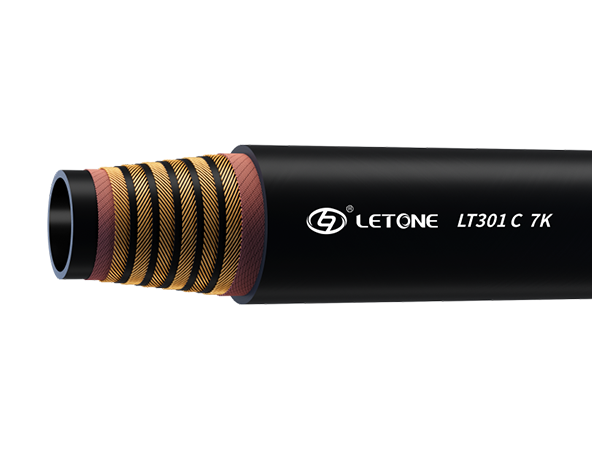
Application of corrosion-resistant rubber hoses
With the deepening development of industrialization, the chemical industry has gradually become one of the important pillars to promote economic growth. However, this field also faces various challenges, especially in the transportation and storage of chemicals, where corrosion issues have always plagued industry professionals. Therefore, the importance of corrosion-resistant materials is increasingly prominent. Corrosion resistant rubber hoses and PTFE chemical drainage pipes, as key fluid transportation tools in modern chemical production, have been widely used in multiple industrial fields due to their unique corrosion resistance characteristics.
Firstly, let's delve into the construction of corrosion-resistant rubber hoses and their applications in the chemical industry. Corrosion resistant rubber hoses are usually composed of three parts: an inner rubber layer, a reinforcement layer, and an outer rubber layer. The inner rubber layer is usually made of rubber materials with good corrosion resistance, such as fluororubber and butyl rubber, which have good resistance to most acid, alkali, and salt chemical reagents. The reinforcement layer is reinforced with fiber fabric or metal wire to improve the tensile strength and pressure resistance of the hose. The outer adhesive layer not only protects the internal structure, but also plays a key role in improving the overall weather resistance and wear resistance of the hose.
Corrosion resistant rubber hoses are widely used in fields such as chemical and pharmaceutical factories due to their excellent comprehensive performance. During the transfer of liquid chemicals, hoses must face long-term erosion from highly corrosive media, and the advantages of corrosion-resistant rubber hoses are fully demonstrated. It can not only avoid pipeline damage caused by chemical reactions, but also maintain stable physical and chemical properties in extreme environments, thereby ensuring the safety and stability of chemical production.
In contrast, the PTFE chemical discharge pipe (i.e. PTFE hose) is a more specialized fluid transport equipment, particularly suitable for chemical processes with higher requirements. Teflon material is known as the "plastic king" due to its excellent chemical inertness and high temperature resistance. This material can resist almost all corrosive chemicals, including strong acids, strong bases, and a range of organic solvents. In addition, the working temperature range of the PTFE chemical discharge pipe can reach -70 ℃ to+260 ℃, which means that the pipe can operate efficiently under both extremely cold and extremely hot conditions.
Even in harsh chemical reaction environments, PTFE chemical discharge pipes can maintain a smooth and non sticky inner wall, ensuring smooth fluid flow without allowing any residual substances to adhere. This characteristic is particularly important in fine chemical production processes. Moreover, the non aging and radiation resistance properties of the pipeline make it excellent in the transportation of radioactive substances or oxidizing gases.
The chemical industry is increasingly focusing on the selection of chemical resistant solvents in material use, not only to extend the service life of equipment, but also to ensure the safety and effectiveness of production. The suction hose with excellent chemical solvent resistance can effectively reduce safety hazards caused by material leakage. These hoses are produced through a strictly controlled process, and their design not only considers the complexity of chemical reactions, but also emphasizes the repeatability of operations and the adaptability of the system, enabling chemical products to be produced and transported in an orderly manner.
Furthermore, both PTFE hoses and corrosion-resistant rubber hoses have their own advantages in practical applications. By combining the chemical stability of Teflon with the flexibility of rubber hoses, the characteristics of both materials are integrated, demonstrating unparalleled adaptability in the design of many process equipment schemes. The diversified selection of materials for the inner layer of the hose, the improved functionality of the outer layer, and the optimized layout of the internal structure are all reflected in the flexible arrangement of the installation of the fluid conveying system.
In summary, corrosion-resistant rubber hoses and PTFE chemical drainage pipes not only solve the problem of corrosion resistance for the chemical industry, but also become a booster for promoting technological progress in the chemical industry while pursuing safety production and environmental protection concepts. In today's trend of sustainable development, these hose products not only improve the quality of chemical products, but also provide more reliable infrastructure support for strict chemical production processes. No matter how technology advances, as long as the chemical industry continues to demand efficiency, safety, and environmental protection, the application of corrosion-resistant rubber hoses and PTFE chemical drainage pipes will be indispensable.